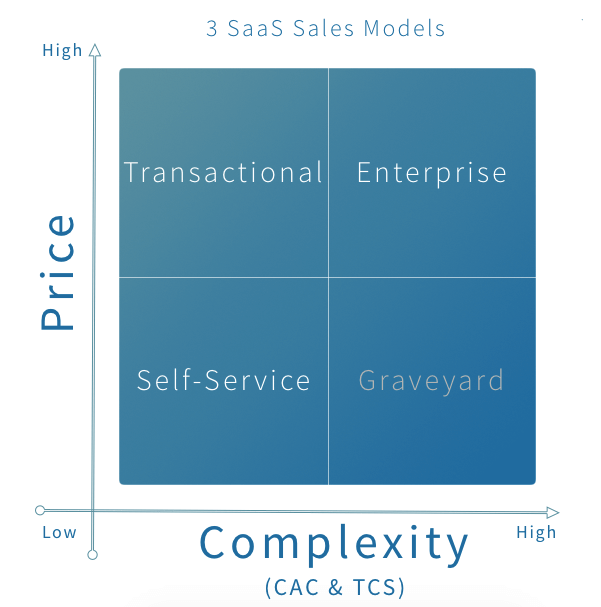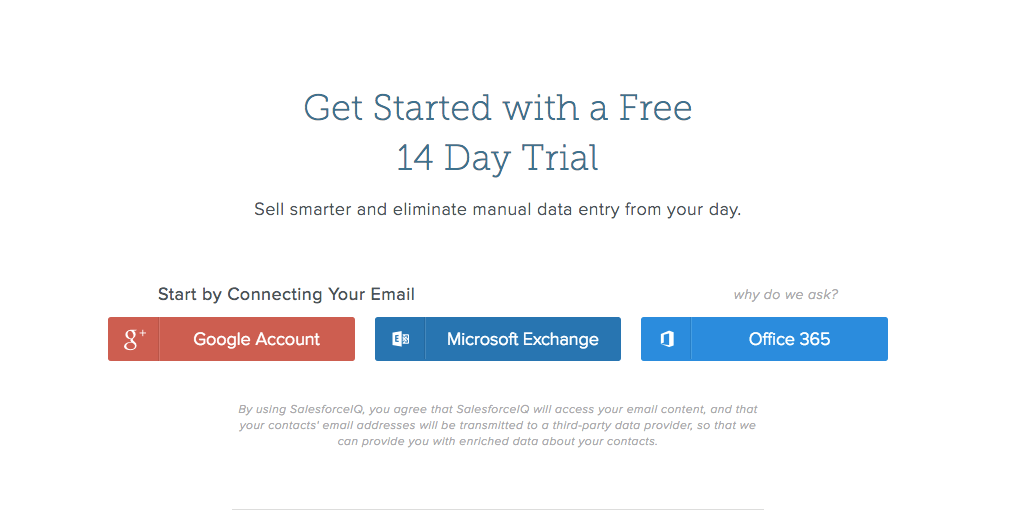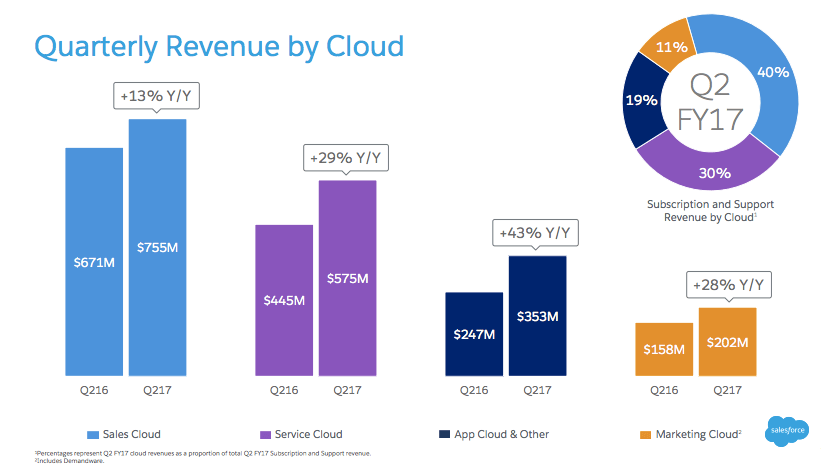TL;DR: Self-serve signups can be awesome for business (scale), but when you have a high price product and a lot of churn you should consider changing your sales model.

If you listen to the godfathers of SaaS and online business, they talk about growing and scaling sales teams. You’ll hear talk about SDRs (sales development representatives) being hired en masse to scale the inbound and outbound pipeline, then hammering the phones and closing deals left and right. VCs love to talk about this on Twitter, and I must admit that I also love the conversation. It inspires those of us building smaller enterprises to keep going.
I’m 12 months into my entrepreneurial journey on Credo. Seven months in, I pivoted from a commission-based revenue model to a subscription revenue model. Instantly, I went from spending about 60% of my day managing leads and invoicing to accelerating product development and marketing. In that time, Credo has grown close to 200% in revenue, traffic, and inbound leads to pros on the platform.
When the revenue model changed, I also changed the way users signed up and were onboarded. Going from an invite-only system (not scalable) to a self-serve model was a lesson in itself and introduced a brand new challenge: churn. While I quickly had a group of new subscribers (and thus new scalable revenue), after a month a number of them churned. But why?
Churn Baby, Churn!
When I dug into the problem, I noticed a few items were amiss:
- Those who signed up did not have their expectations properly set for what they would receive right at the beginning.
- Some new customers had a niche offering. Because they were not aligned with what my business offers, they rightly did not see the value and cancelled.
- A high customer loan-to-value ratio should mean lower churn, but mine was abnormally high.
Unbeknownst to me, I was not clear on the type of sales model I needed. As I went down the rabbit hole of educational content around startup sales (weeding through plenty of marketing material), I discovered that a solid grid already existed to help me (and you!) think through the problem and find the right model for my (or your!) company’s needs.

Source: Clement Vouillon, Medium.
We won’t dive deeper into pricing and team structure and how that impacts your sales style decision. However, I will say that before you decide on a sales model for your company you should study up. I recommend “SaaS Pricing” by Patrick McKenzie.
Let’s talk through the different levels and businesses who have used them effectively, shall we? We’ll also discover where I went wrong and what you can learn from my mistakes.
Self Service
Self service is the holy grail. You build a product, people sign themselves up for it, and they happily type their credit card number into Stripe–letting you charge monthly into perpetuity. This was the first model I tried at Credo.
Of course, if you’ve been in the game for any amount of time, you know that this is really hard to do. Many companies try to get around it by offering a freemium model, whereupon you allow potential (that’s what they still are) customers to “join” your site and have access to a subset of features. Then the goal is to upgrade them to a paid plan (you have one of those, right?) because you provided them enough value that they want to pay.
The reality is that this rarely happens. We have seen countless startups embrace this model only to go out of business a few years later because they are unable to raise the funds needed to sustain their business. Potentially, a smarter model is a free trial, which Salesforce does for its SalesforceIQ product:

Self-service, of which Moz is a great example, works well when you have a strong inbound marketing engine that builds an audience that then desires to buy from you. The basic idea is to build an audience, provide that audience with enough value to bring them down the funnel to the point of decision, and then convert them to a paying user. This works on digital products and SaaS.
Self-service minus freemium is a slower path to growth, but when done right, it can build a very valuable and engaged business.
This model did not work for me because it led to inconsistent revenue, increased churn, a lower lifetime value for each pro on the platform, and made balancing supply and demand in the marketplace much more difficult than I cared to manage in the business.
Enterprise
When you sell an expensive ($50k a year and up) product, sales cycles take a long time; your potential customer must see the value in the price you are charging. It is also likely that your customer needs to see value across multiple parts of their business to justify the expense.
Take Salesforce as an example. While they have their SMB offering, which is self-service and goes from $25 to $150 per user per year (paid annually), they also have their large scale enterprise tool that, according to Marc Benioff’s recent tweet, accounts for a large percentage of their overall revenue:

Salesforce’s software is expensive to buy and expensive to implement and keep clean for multiple reasons:
- Often multiple teams internally are required to sign off to procure the budget to purchase Salesforce.
- Multiple teams are involved in the procurement, installation, training, and maintenance steps of the process. This process can sometimes involve hiring new employees or consultants to complete each step correctly and efficiently.
- Every team internally has their own strategy and set of priorities. Streamlining each of these to make a successful installation happen can be a full time job in and of itself.
Because of the above, Salesforce sales cycles are long. While their model is unscaleable without adding more humans to the force, it obviously does extremely well for them. The model is so high-touch on the buyer side and the implementation costs are so high both literally and figuratively that customers tend to get onto Salesforce and then never leave, making their lifetime value extremely high.
Churn is rarely a problem in this model, but it requires both a robust funnel, a high-ticket item, and long cycles to get to your revenue goals. This model was not for me.
Transactional
The transactional sales model is arguably the hardest because you must balance both the sales and product, while simultaneously implementing and maintaining a robust inbound and outbound (paid) marketing strategy that brings in consistent leads.
I settled on the transactional model for my business because, as a solopreneur, I am only able to be so proactive in doing any sort of outbound sales. A steady stream of inbound leads is necessary for the long term health and viability of my business. On the other side, it has taken longer to grow the business (aside from being bootstrapped) because of the time commitment required to create content as lead magnets (as well as building out, implementing, measuring, and changing lead nurturing email drips and so on).
One great example of a transaction model is HubSpot ($CRM). Their pricing is mid-market range, anywhere from $200 per month up to $2400 per month, with various onboarding/implementation fees extra. Their product is not super complicated to set up, but it’s also expensive enough that customers need an account manager or point of contact to whom they can ask questions. I would also bet that this approach has helped HubSpot reduce churn (as well as requiring payment for the year up front).
The reason HubSpot’s model works so well is their incredibly active inbound marketing machine. They crank out content daily, sometimes multiple times a day, and then use that to gather email addresses and nurture these people down the conversion funnel. They’re an inbound marketing company practicing what they preach and layering a sales organization on top of it.
The transactional sales model allows you to scale your software business revenue and keep the size of your sales team manageable.
Graveyard
The graveyard is where you company ends up when you try to sell a complicated product that requires more explanation than can be done online or you try to sell a very expensive product via the self-serve model
The TL;DR here is “avoid the graveyard.” But after my experience launching a mid-level priced subscription business as a self-serve model, only to then realize that the transactional model was right for me, I have empathy for those businesses who launch with the wrong model.
If your company is heading towards the graveyard, yet you are scared to change your model to something potentially unknown to you, my best advice is to start small by validating the new model before you move to it.
My sales model change was easy as a solo founder with no full time employees. The model I had selected wasn’t serving my company’s needs the way it needed to, so I could change quickly and see if the new model worked better. So far, it has.
Within a larger and more established company, the challenge to stay nimble and quick to change when needed is real. Many companies die because they become bloated and risk-adverse. Why else would companies that are successful in one market struggle in another?
But if you’re in a small startup, you’re lucky. You can quickly test and roll out ideas. In a larger company, you may need to plead your case if there is no precedent for testing new ways of doing. That’s not to say the effort isn’t worth the reward, just that more effort may be required to reach the same level of reward.
—
Sales within a startup is a fascinating beast. Whether you choose no sales (self-service) or a true sales model (enterprise or transactional), at the end of the day, the goal is to avoid the graveyard of startups that have come before us and will come after us.
It’s certain that startup sales can be hard, but it doesn’t have to suck. Do your due diligence to find a model to test, test it, then go where the data leads you. Following this process led me to increasing my revenue handily to the point where, 11 months after beginning work full time on my platform, Credo is profitable and almost sustaining my lifestyle personally. Your situation is likely quite different, but that’s the power of the right sales model.
John Doherty is the founder of Credo.